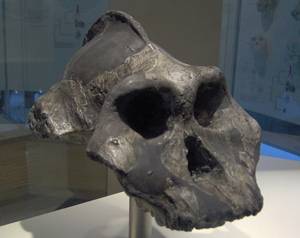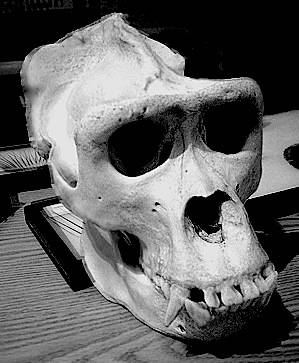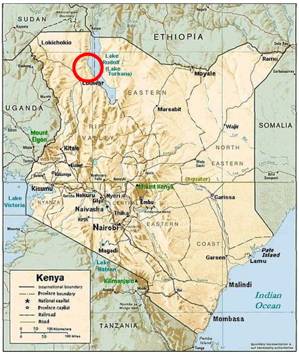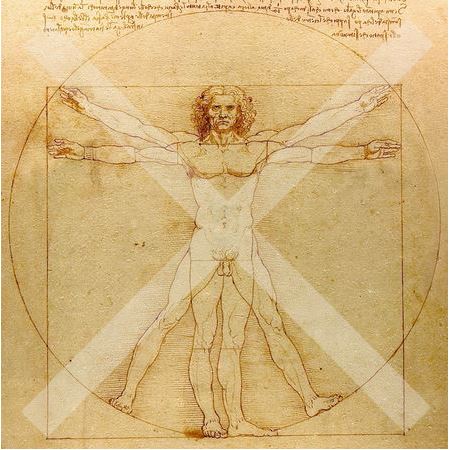Paranthropus aethiopicus
Online Biology Dictionary
|
|
EUGENE M. MCCARTHY, PHD GENETICS

|
|
Paranthropus aethiopicus The Black Skull (KNM-WT 17000). Image: Nrkpan |

|
| Skull of an adult male gorilla |
Fossil material attributed to this hominid — one of the robust australopithecines — range from about 2.4 to 2.7 million years in age. Its cranial capacity was rather small (410 cc) and, overall, the skull is apelike, much like that of a male gorilla (compare figures at right). Cranial capacity ranges from 280 to 450 cc in adult chimpanzees, and from 350 to 750 cc in adult gorillas (Schultz 1965).
The first material assigned to Paranthropus aethiopicus was an edentulous mandible found in 1967 in southern Ethiopia, west of the Omo River by a French expedition led by Camille Arambourg and Yves Coppens (Arambourg and Coppens 1968a, 1968b). This fossil, known as Omo 18, failed to generate much interest until the discovery of the Black Skull (KNM-WT 17000) in 1985 (Walker et al. 1986). The skull, which is nearly complete except for the lack of teeth (the tooth roots are, in fact, present), is black because of mineral absorption during fossilization. It was found in Kenya west of Lake Turkana (Walker et al. 1986).

|
| Site of Black Skull's discovery |
Such a small number of specimens of Paranthropus aethiopicus have been found that little is really known about this hominid beyond the structure and appearance of the cranium. Given the dearth of postcranial material, judgments must be based primarily on KNM-WT 17000.
The gorilla-like structure of this skull has led some to propose that australopithecines were not human ancestors. But why throw out the Taung Baby with the bath water? This skull has much more in common with a gorilla than does that of a gracile australopithecine. Perhaps the gracile forms, and not the robust ones, were the ancestors of humans.
Given the lack of postcranial material, perhaps this skull, with its large sagittal crest and zygomas, why not suppose that this skull actually does represent the remains of an ancient gorilla or gorilla-like ape (modern gorilla skulls show a great deal of individual variation and this particular cranium probably falls within that range of variation) — this, however, is merely the author's opinion and is not an idea generally accepted.
Perhaps we are not from the apes alone?

|
Facts about Paranthropus aethiopicusHabitat: Savanna. Synonyms: Australopithecus aethiopicus, Paraustralopithecus aethiopicus. Pronunciation: pair-RAN-thrəp-pəs or (PAIR-an-THRŌPE-pəs) Ī-thee-Ō-pə-kəs. Etymology: The name of this hominid is constructed from the Greek prefix par-, the Greek suffix -anthropus, and the Latin word aethiopicus literally meaning "from Ethiopia", but in scientific names indicating an origin south of the Sahara Desert in Africa. Note: Members of the genus Paranthropus, the robust australopithecines, are often assigned instead to the genus Australopithecus, which otherwise contains only the gracile australopithecines. |
Australopithecus bahrelghazali >>